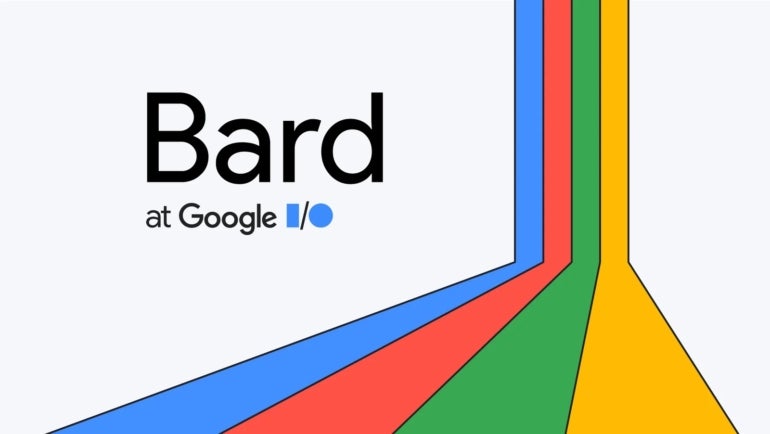
Google has closed the wait list for Bard, its generative AI chatbot, after announcing the chatbot’s general availability at the Google I/O conference on Thursday. Bard appears to be a direct competitor of ChatGPT and GPT-4, the generative AI from startup OpenAI, which Microsoft uses in its Bing Chat.
Jump to:
- How to use Google Bard
- Google Bard builds on years of research
- Google wants user feedback about Bard
- Google competing with Microsoft and OpenAI
- What tech leaders should consider before using AI
How to use Google Bard
Now that the wait list has been closed, you can use Google Bard by visiting bard.google.com and registering with an existing Google account. Accounts managed by a Google Workspace admin are not eligible. Bard runs in Chrome, Safari, Firefox, Opera and Edgium.
Google Bard builds on years of research
Google Bard runs on Language Model for Dialogue Applications, Google’s own large language model. Google first announced it was working on testing its generative AI in-house in January. Google Bard is based on work done in Google’s AI Test Kitchen, which launched in August 2022. Following that, it was available through a wait list starting in March. The tech giant has worked on a machine learning program for generating natural-sounding language starting in 2017.
Bard also hooks directly into Google search. Most conversations come with a suggested search attached, which Google suggests users can do to “check the response.” Google announced at the I/O conference that AI will also be integrated into Search.
Google Bard is only available in U.S. English, with plans to expand it to other languages. In addition, Google plans to add the ability to write code to Bard, as well as “multimodal experiences,” which includes video and audio.
Google wants user feedback about Bard
“Bard is experimental, and some of the responses may be inaccurate,” Google pointed out. The team at Google even poked fun at some of Bard’s suggestions in its own announcement post.
Google also emphasized privacy. The version of Bard that was available through the wait list couldn’t answer questions about what happened earlier in a conversation between itself and a human, for example. According to the Bard FAQ, Google purposely limited Bard’s “ability to hold context.” Google is asking for users to send feedback on Bard’s responses.
In an internal email viewed by CNBC, Google and Alphabet CEO Sundar Pichai told employees, “Things will go wrong. But the user feedback is critical to improving the product and the underlying technology.”
Google is competing with Microsoft and OpenAI
Google Bard’s big name competitor is OpenAI’s ChatGPT. So far, ChatGPT has the advantage of already being able to write basic code, expanding its enterprise applications significantly.
Microsoft’s Bing search uses OpenAI’s GPT-4, the large multimodal model on which ChatGPT is built. ChatGPT is currently available with a subscription to OpenAI’s ChatGPT Plus.
Startup Anthropic, which has gained funding from Google, has its own AI assistant, Claude. Anthropic is playing in the search engine space with a partnership with DuckDuckGo while using Google as a cloud provider.
What tech leaders should consider before using AI
Chat assistance made with large language model AI have faced criticism for returning answers that are easily parsed but factually incorrect. There are also some concerns about the job training AI requires outweighing the productivity benefits, or AI content replacing human-made work and, therefore, limiting numbers of available jobs. Business leaders should take into account whether generative AI is appropriate for their workplace culture as well as whether it improves productivity.







